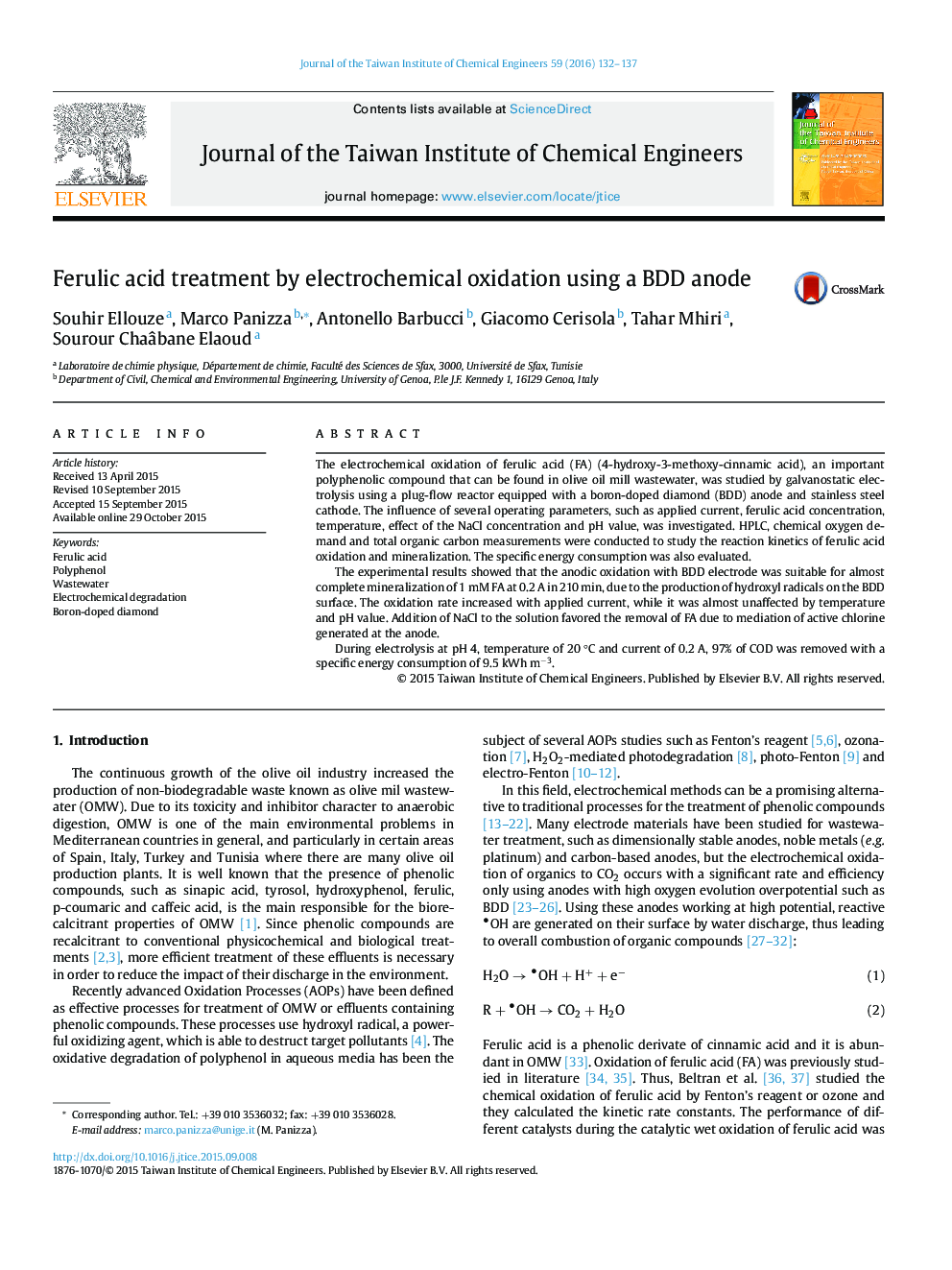| Article ID | Journal | Published Year | Pages | File Type |
|---|---|---|---|---|
| 690532 | Journal of the Taiwan Institute of Chemical Engineers | 2016 | 6 Pages |
•Complete electrochemical removal of 1 mM of ferulic acid using a diamond anode.•We studied the influence of the main operating parameters affecting the treatment.•The oxidation rate increased with current while it was unaffected by T and pH.•Energy consumption of 9.5 kWh m−3 for complete COD removal.
The electrochemical oxidation of ferulic acid (FA) (4-hydroxy-3-methoxy-cinnamic acid), an important polyphenolic compound that can be found in olive oil mill wastewater, was studied by galvanostatic electrolysis using a plug-flow reactor equipped with a boron-doped diamond (BDD) anode and stainless steel cathode. The influence of several operating parameters, such as applied current, ferulic acid concentration, temperature, effect of the NaCl concentration and pH value, was investigated. HPLC, chemical oxygen demand and total organic carbon measurements were conducted to study the reaction kinetics of ferulic acid oxidation and mineralization. The specific energy consumption was also evaluated.The experimental results showed that the anodic oxidation with BDD electrode was suitable for almost complete mineralization of 1 mM FA at 0.2 A in 210 min, due to the production of hydroxyl radicals on the BDD surface. The oxidation rate increased with applied current, while it was almost unaffected by temperature and pH value. Addition of NaCl to the solution favored the removal of FA due to mediation of active chlorine generated at the anode.During electrolysis at pH 4, temperature of 20 °C and current of 0.2 A, 97% of COD was removed with a specific energy consumption of 9.5 kWh m−3.
Graphical AbstractFigure optionsDownload full-size imageDownload as PowerPoint slide
